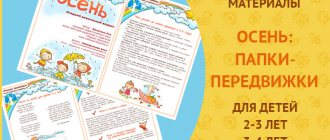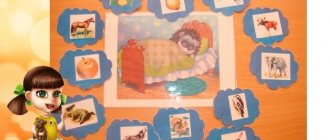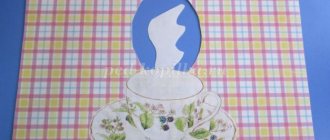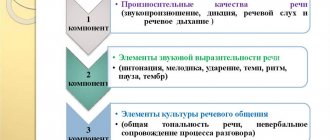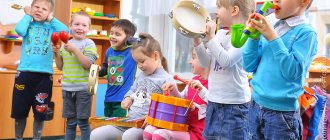Didactic games for kindergarten “Child’s Emotions”
Didactic games “Child’s Emotions”
(Pictograms)
This material is intended for preschool teachers, educational psychologists, and primary school teachers.
Pictogram cards introduce children to human emotions, teach them to be aware of their own emotions and notice the emotions of other people. I suggest you, dear colleagues, to make several sets of cards for the didactic game “Child’s Emotions.”
They can be used for various activities, independent exercises for children, joint games, as well as individual work with the child on the development of the emotional sphere. I think it is very important to introduce children to their own emotional states and the emotions of other people. Preparatory work: making didactic games “Child’s Emotions”.
Target:
Introduce children to different manifestations of human emotions.
Author: Tatyana Shapiro A boring poem about boredom! Boredom entered the house without knocking. Boredom settled in the house. An hour later she ran away. She, guys, got bored! Card set No. 1 includes 9 test cards with emotion pictograms (and their names). A set of cards recommended for working with children aged four years and older, cut-out picture cards depicting emotions and poems.
Card set No. 2 includes 9 cards with pictograms of emotions, cut into halves. And also a test card with small pictograms. Additionally, I suggest making pictogram outline cards for sketching emotions on your own. These are cards with empty circles, in each of which you can draw your face with different emotions. For example, in one circle there is a happy face, in the other there is a sad face. Card set No. 3 includes 9 test cards with emotion pictograms (and their names), and 9 cut cards. A set of cards recommended for working with children six years old, cut-out picture cards depicting emotions. They look like puzzles. Each “face” consists of two parts that are different from each other. The child’s task is to connect them correctly with each other and get a certain facial expression, because it’s not that easy! Each face is characterized by certain curves of the eyebrows, lips, and nose shape. After the child has successfully completed the task assigned to him, you can discuss this or that emotion (during the production process). Set of cards No. 4 is 18 cards with photographs of children (photos or pictures can be taken from the Internet, as I did), depicting a specific emotion (required: two photos or pictures for each emotion). Glue a small pictogram-emotion on the back of the photo for self-control. The set includes small cards with pictograms of emotions. Recommended for children five to six years old; from this age you can use cards with a schematic depiction of emotions, in which the child selects pictograms for each emotion depicted in these pictures (during the manufacturing process). There are many interesting games in which you can use Child Emotions cards.
For example: the game “Guess what my mood is?”, which consists of the child choosing a card and depicting the emotion of the pictogram that is shown in the picture, and other players must guess the emotion and name it. Variability depends on the knowledge and imagination of the teacher! Materials intended for making cards:
1. Emotion-schemes:
2. Diagrams depicting emotions:
3. Pictures-emotions:
Author: Pavel Kunshin
Oh, I would like to return to childhood for a day and plunge into carelessness again;
To the voice of my mother: don’t play around in the water - go to the river with friends at the scarlet dawn! Half a day fishing, half a day swimming; Laugh all day in fun games, So that the world always seems happy And mom and dad are alive again... Perhaps it’s not too old to strive, If life worries you and you dream about childhood... I wish you all creative success!!!
We recommend watching:
Games with clothespins. Didactic manual “Who eats what” Do-it-yourself educational toys “Balls - Smeshariki” Fairy tale for preschool children. Domovyata Summary of a psychologist's lesson with children 5-7 years old
Similar articles:
Nurturing the child's feelings. Development of the emotional sphere in children
Sign language
Do-it-yourself didactic games for preschoolers on the topic “Sense Organs”
DIY didactic game for preschoolers. World of flora and fauna
Do-it-yourself didactic game for kindergarten on the topic “Transport”
Preparing for the “PICTOGRAMS” test
We learned how to use icons to designate various objects and “pack” the big into the small in Pictograms (Part 1). Here we will consider the features of the method of testing figurative memory and preparing for it.
You can’t prepare for the PICTOGRAM test in a week. This requires hard work and Mom’s patience.
While preparing for the test:
- There will be a colossal development of imaginative thinking. Especially if you don’t give your child ready-made images, but think together: How can this be drawn?
- The child will learn to identify the characteristic features of objects, objects, and phenomena.
- will learn to draw many pictures and, in general, there will be a leap in the development of visual-motor coordination (VMC).
Therefore, I advise parents of all preschoolers to go through all these words at least once, even if you are not preparing for testing.
Test notes:
- The order on the piece of paper matters. It is good if the child places the drawings sequentially, leaving space between them. To organize his work, the child can use numbers to number the drawings.
- Letters and numbers are not allowed
How to draw these “strange” words:
- To denote people of different genders, we used the notation of a triangle up and down, with a circle instead of a head.
- Often there are phrases like “Warm rain” or “cold wind”. The kids and I agreed to use the “Sun” and “snowflake” icons to represent temperature.
- A separate problem is the transmission of emotions: sadness-sadness, happiness-joy-fun. If you use emoticons with a smile up and down, then the child begins to confuse this with happiness or joy. Therefore, it is probably better to develop your own system of emoticons or other icons for all emotions, and just learn it. Synonyms are not counted during testing. So if instead of SEPARATION, the child says SEPARATION, then he loses a point.
- To represent sound we used the sound waves icon (wi-fi icon)
- Arrows can be used to indicate the change in state from “was” to “became” and to indicate movement.
During your preparation, you, perhaps like me, will discover a lot of interesting things:
- The child begins to draw details and cannot stop. In this case, you need to stop it very gently and switch to the next word. This is a problem of inertia and poor attention span. You can try to train. There are special simulators.
- The child cannot draw. Can't draw a dog or a table right away.
- The child has little idea of what order is on a piece of paper. This may indirectly indicate an inability to organize the space around oneself and unpreparedness for school in general, because order in your notebook is the basis of studying at school.
Instructions for adults:
- The above words and phrases are slowly read aloud, and the children draw what comes to mind.
- Each drawing takes 0.5-1-2 minutes.
- At the same time, the adult carefully monitors that the child does not write letters, but draws.
- If the drawing turns out to be too large, you can remind that there is only one piece of paper, and all the drawings need to fit on it. This reminder is done once, approximately after the second or third word.
- If children begin to get carried away, draw out details and add something to the original drawing, then you need to remind them that it is not the quality of the picture that is important, but its connection with the word.
- If the child continues to draw, the next word is read to him.
- After finishing the work, the adult must number the drawings so that it is clear which drawing refers to which word.
- If your child can count, you can ask him to do it himself.
- An hour after the test, the children are presented with their pieces of paper with drawings and asked that, looking at their drawings, they remember the words that the adult dictated to them.
- The number of correctly reproduced words, as well as the number of errors, are counted and recorded in a journal.
- If instead of the word “parting” the child says “separation” this is considered a mistake.
Instructions for the child:
- I will now read the words that you need to remember well.
- There are a lot of words, and to make it easier for you to remember them, you can draw something on this piece of paper that will remind you of each of them.
- You can only draw pictures, not letters.
- Since there are quite a lot of words, but there is only one piece of paper, try to arrange the pictures so that they all fit on it.
- Try not to draw pictures. The quality of the drawing is not important, it is only important that they correctly convey the meaning of the words, so that you can remember them later.
Training scheme:
- For the first time we draw 10 words without a time limit. At first, you may have to think for a long time and show your child how to draw it on a separate piece of paper.
- Gradually, based on the child’s readiness, we begin to limit the time to 1 minute.
- After an hour and every other day, the drawings are presented to the child and he is asked to name the words. The results are recorded in a journal.
- The next day, at the beginning of class, you can look at the sheets with drawings from the previous days.
